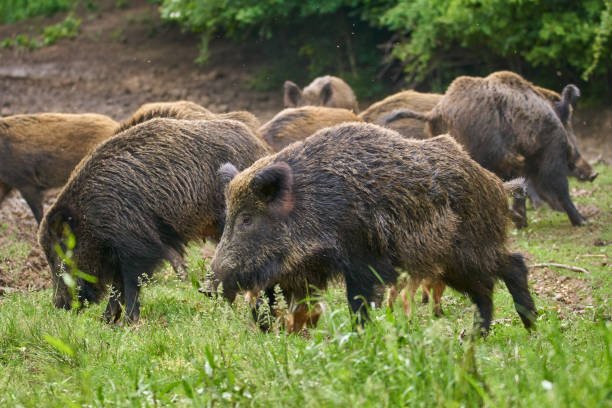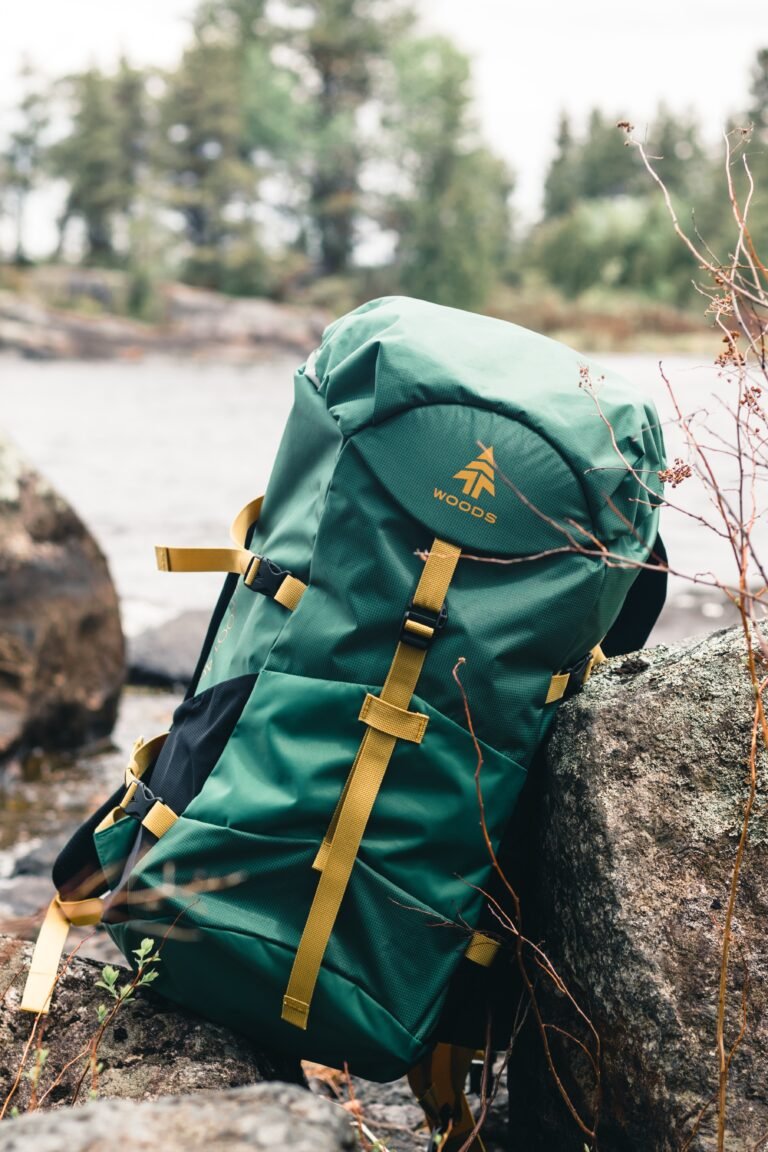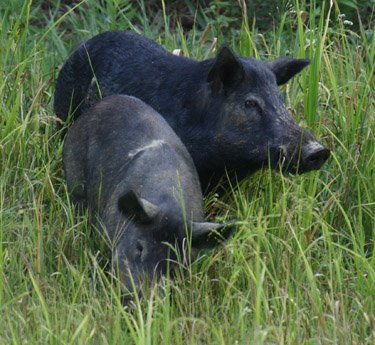Seasonal Hog Hunting – What You Need to Know
When it comes to hog hunting, it’s not just a sport or a pastime; it’s an age-old tradition deeply rooted in our history. Hog hunting involves pursuing wild hogs, also known as feral pigs or boars, in their natural habitat. Let’s delve into our seasonal hog hunting guide.
These creatures have been around for centuries and have become a prominent part of the American landscape. Hog hunting holds immense significance for several reasons.
Firstly, it helps control the population of these invasive species that wreak havoc on crops and ecosystems across the country. Wild hogs are notorious for destroying agricultural fields, damaging forests, and displacing native wildlife.
By participating in hog hunting, we manage their numbers and minimize the ecological damage caused by their presence. Secondly, hog hunting provides an exhilarating experience for outdoor enthusiasts and hunters alike.
The thrill of tracking down these intelligent creatures through dense forests or open plains is unparalleled. It demands patience, skill, and adaptability as you navigate different terrains and weather conditions.
Overview of Seasonal Variations in Hog Hunting
One fascinating aspect of hog hunting is how the strategies employed vary with the changing seasons throughout the year. Each season brings unique challenges and opportunities for hunters looking to test their skills against these wily prey. Wild hogs exhibit diverse behaviors in different seasons influenced by breeding patterns and food availability.
Understanding these seasonal variations is crucial for successful hunts year-round. During certain seasons when mating activity peaks, hog hunters target reproductive hogs by observing behavioral signs such as wallowing pits or fresh tracks near water sources.
Other times when food sources change throughout the year – such as mast-producing trees in fall or agricultural fields after harvest – hunters must adapt their techniques accordingly. So whether you’re venturing into spring’s lush woodlands, summer’s moonlit nights, or autumn’s bountiful harvests, hog hunting in different seasons offers all-weather adventures that keep the excitement alive year-round.
Brief History and Introduction to Wild Hogs in North America
It’s fascinating to delve into the roots of wild hogs in North America. These creatures, also known as feral pigs or boars, have a rather intriguing history. Believe it or not, they weren’t originally native to this continent!
The story goes back to the 16th century when Spanish explorers brought domesticated pigs during their expeditions. Over time, some of these pigs escaped or were released into the wild, where the adventure began.
Fast forward a few centuries, and today, we find wild hogs existing in large numbers across various regions of North America. Their population has grown exponentially due to their adaptability and robust breeding capabilities.
These resilient animals have successfully carved out a niche in diverse habitats ranging from dense forests to open grasslands. Now, let’s take a closer look at the characteristics and behavior of these captivating creatures.
Characteristics and Behavior of Wild Hogs
Wild hogs are an interesting mix of strength, intelligence, and adaptability. Their distinct physical attributes make them stand out in the animal kingdom. These creatures are built for survival from razor-sharp tusks that can cause significant damage to their tough hides covered in coarse hair.
When it comes to size variations among wild hogs, there is quite a range. Depending on genetics and food availability, adult males (boars) can weigh between 100-400 pounds or even more.
Females (sows) are slightly smaller but still possess considerable strength. In addition to their physical traits, understanding their social structure and communication patterns is crucial for successful hog-hunting endeavors.
Wild hogs typically live in groups called sounders consisting of several females with their offspring and one dominant male boar leading the pack. Communication occurs primarily through vocalizations like grunts, squeals, and snorts, which serve different purposes, such as expressing dominance or warning others of impending danger.
By understanding wild hogs’ evolutionary journey, physical characteristics, and social dynamics, we can better appreciate the challenge and allure of hog hunting in different seasons. So get ready for all-weather hog-hunting adventures as we explore more in the upcoming sections!
The Impact of Wild Hogs on the Environment
Ecological Consequences of Wild Hog Populations: When Pigs Go Wild!
Ah, those wild hogs, wreaking havoc with a devil-may-care attitude! These voracious creatures may seem harmless initially, but their presence in the wild can have severe ecological consequences.
Picture this: rolling hills and valleys, once adorned with vibrant crops and lush forests, are now transformed into feeding grounds for marauding hogs. The damage caused by their rooting and wallowing tears a farmer’s eyes.
These piggies aren’t just dirty; they’re destructive! One of the most significant ecological impacts of wild hog populations is the destruction they cause to crops, forests, and native vegetation.
These omnivorous beasts have an insatiable appetite for anything edible—crops like corn, soybeans, and even delicious fruits. They can ravage an entire field in no time flat!
And it’s not just agricultural lands that bear the brunt of their plundering; they also chew away at forests and native vegetation. This widespread destruction not only throws a wrench into farmers’ livelihoods but also disrupts the delicate balance of ecosystems.
Disruption of Ecosystems and Native Wildlife Habitats: When Pigs Collide!
Wild hogs may think they’re kings of the forest, but their reign causes quite a commotion among other inhabitants. As these trotting terrors move through different regions for food and shelter, they leave behind disrupted ecosystems and displaced native wildlife. Unlike many other animals that coexist harmoniously with nature’s intricate tapestry, hogs bulldoze their way through habitats without much regard for who gets trampled underfoot.
The disruption caused by wild hog populations affects both plants and animals. Their relentless rooting and wallowing damage the soil structure, making it difficult for native plants to regenerate.
They also feast on the eggs and young of ground-nesting birds and reptiles, throwing their reproductive cycles out of whack. The ripple effect is felt throughout the food chain, impacting the species they interact with and those indirectly reliant on that ecosystem’s delicate balance.
So, while wild hogs may enjoy their all-weather hunting adventures in different seasons, we must understand and address their ecological impact to preserve our natural heritage for future generations. Stay tuned for our next section, where we delve into the fascinating world of seasonal factors influencing hog hunting success!
Seasonal Factors Influencing Hog Hunting Success
Breeding Season: Strategies for Targeting Reproductive Hogs
When it comes to hog hunting, understanding these wild creatures’ breeding patterns and behaviors can greatly increase your chances of a successful hunt. Breeding season is crucial in hog activity, influencing their behavior and movements. In many regions, this period typically falls during the spring months.
During this time, hogs actively seek mates and engage in intense mating behavior. Identifying signs of mating activity during specific seasons is key to targeting reproductive hogs.
Keep an eye out for telltale signs such as wallowing spots, where hogs roll around in the mud to cool off and mark their territory. These wallows are especially prevalent during breeding season as males create them to attract females.
Additionally, listening for vocalizations such as grunts and squeals can indicate the presence of mating activity nearby. By understanding these behaviors and tracking these signs, you can strategically position yourself for a successful hunt during the breeding season.
Feeding Habits: Leveraging Seasonal Food Sources to Locate Hogs
Wild hogs are opportunistic feeders that adapt their dietary preferences based on the seasons. To increase your chances of a successful hunt, it’s essential to understand their preferred food sources throughout the year.
In spring, when vegetation starts flourishing, hogs focus on roots, tubers, and fresh grasses as they provide ample nutrition after winter. As summer arrives with its scorching heat waves, hogs divert their attention towards water sources such as ponds or creeks while feasting on fruits like berries that ripen during this time.
Fall marks mast-bearing tree season, where nuts like acorns become an irresistible delicacy for hogs; they’ll be found scouring oak forests for these treats. During winter, when food becomes scarce, hogs become more opportunistic and scavenge for anything they can find.
Adapting your hunting techniques based on changing dietary preferences is crucial. For instance, when vegetation is abundant in spring and summer, scouting areas with fresh greenery or near water sources can be productive.
In the fall, focus on wooded areas with oak trees to encounter hogs gorging on acorns. Understanding the seasonal variations in hog feeding habits will help you plan your hunting strategy accordingly and make the most of all-weather hog hunting adventures throughout the year.
Gear and Equipment for Seasonal Hog Hunting
Picking the Right Firearms or Archery Equipment for Different Seasons
When it comes to hog hunting in different seasons, selecting the right firearms or archery equipment can significantly impact your success. In colder months, such as fall and winter, when foliage is sparse and hogs are more active during daylight hours, a high-powered rifle like a .308 or a 30-06 can be a great choice. These calibers offer excellent stopping power and accuracy at longer distances, allowing you to take down hogs precisely.
On the other hand, when vegetation is thicker in spring and summer, stalking hogs may require a different approach. In these seasons, lighter calibers like .223 or .243 might provide better maneuverability due to their lower recoil and versatility in navigating dense cover.
Additionally, archery enthusiasts have the advantage of being able to hunt silently from closer ranges. Choosing a compound bow with adjustable draw weight can be advantageous as it allows you to adapt your equipment depending on your target hog’s size.
Selecting Appropriate Caliber or Draw Weight Based on Hog Size
Hog sizes can vary greatly depending on various factors such as age, breed mix, and regional influences. Therefore, it’s vital to consider the appropriate caliber or draw weight based on the expected hog size for efficient takedowns.
For smaller hogs weighing under 100 pounds (45 kg), calibers like .223 Remington or 6.5 Grendel are effective as they provide sufficient stopping power without excessive recoil. For larger hogs weighing 200 pounds (90 kg) or more, transitioning to heavier calibers like .308 Winchester or even magnum calibers can ensure effective takedowns without risking unnecessary animal suffering.
It’s crucial to prioritize shot placement, aiming for vital areas such as the heart or lungs, regardless of hog size. For archery hunters, selecting the appropriate draw weight is equally important.
A draw weight of 40-50 pounds may suffice for smaller hogs, while larger hogs require higher draw weights ranging from 50 to 70 pounds. This ensures enough kinetic energy to penetrate the hog’s thick hide and reach vital organs.
Advantages of Specific Ammunition or Broadhead Types During Different Times
Different seasons can call for specific ammunition or broadhead types in hog hunting scenarios. For example, expanding ammunition or hollow point rounds can be advantageous during wet seasons when muddy conditions prevail.
They tend to mushroom on impact and create a larger wound channel for increased blood loss and better stopping power. During drier seasons, when foliage is abundant, and shots can be at longer distances, utilizing premium ammo with controlled expansion characteristics ensures reliable terminal performance even at extended ranges.
Brands like Nosler Partition or Hornady InterLock are popular among seasoned hog hunters due to their excellent penetration capabilities and ability to retain a high percentage of their original weight upon impact. Similarly, archery enthusiasts should consider using mechanical broadheads during warmer seasons when hogs are more active and adrenaline-fueled.
Mechanical broadheads offer greater cutting diameter upon deployment, maximizing tissue damage and increasing chances of swift takedowns. Overall, understanding the benefits of different gear options and selecting the appropriate firearms or archery equipment based on seasonal variations can significantly enhance your hunting experience during all-weather hog hunting adventures.

Hunting Techniques for Different Seasons
Spring season: Spot-and-stalk hunting techniques
During the spring, when foliage cover is relatively limited, spot-and-stalk hunting becomes an effective technique for pursuing wild hogs. With less vegetation obstructing your vision, you can scan the landscape for signs of hog activity.
Look for fresh tracks, rooting marks, or wallowing areas near water sources. These indicators suggest that hogs are nearby and actively searching for food.
Once you’ve located potential hog areas, moving quietly and cautiously is crucial to prevent alerting them. Take advantage of natural terrain features like hills or dense shrubbery to stay hidden as you approach your target.
Be mindful of wind direction, as hogs have a keen sense of smell. Use scent control techniques such as scent-eliminating sprays or hunting downwind to minimize the chances of detection.
Utilizing game cameras to identify feeding areas
Another valuable tool in your arsenal is game cameras. Strategically placing these motion-activated cameras near feeding areas can provide insights into hog movement patterns and behavior. By studying the images captured by these cameras during different times of the day and throughout the season, you can identify peak activity periods and determine where hogs are most likely to congregate.
Analyzing game camera footage allows you to accurately establish a feeding routine among wild hogs in your preferred hunting area. This knowledge will enable you to plan your hunts accordingly by positioning yourself in strategic ambush spots based on their travel patterns and timing.
Summer season: Nighttime hunting strategies
As summer approaches and temperatures rise during daylight hours, wild hogs become more active at night when it’s cooler. This shift in behavior calls for a different approach – nighttime hog hunting strategies. One effective technique during summer nights is utilizing thermal imaging technology.
Thermal scopes or monoculars detect the heat signatures emitted by hogs, making tracking them in low-light conditions easier. This advanced technology gives hunters a significant advantage, enabling them to locate hogs hidden in dense vegetation or under darkness.
When hunting at night, following local hunting regulations and ensuring you have proper permits for nocturnal hunts is crucial. Additionally, always prioritize safety by using appropriate lighting equipment and communicating clearly with your hunting companions.
Conclusion
Seasonal hog hunting offers adventure and excitement throughout the year. Each season presents unique challenges and opportunities for hunters to refine their skills and adapt to changing circumstances. From employing spot-and-stalk techniques during spring when foliage cover is limited to utilizing thermal imaging technology for nighttime hunts in the summer, there’s no shortage of strategies to enhance your success.
By understanding wild hog behavior patterns specific to different seasons and leveraging appropriate gear, hunters can increase their chances of a fruitful hunt. So, embrace the diversity of all-weather hog hunting adventures and revel in the thrill of pursuing these resilient creatures across various seasons.





